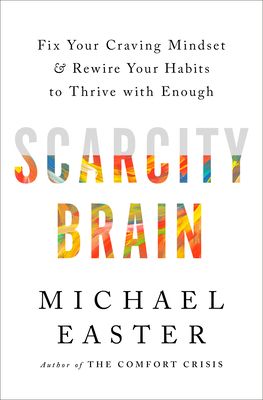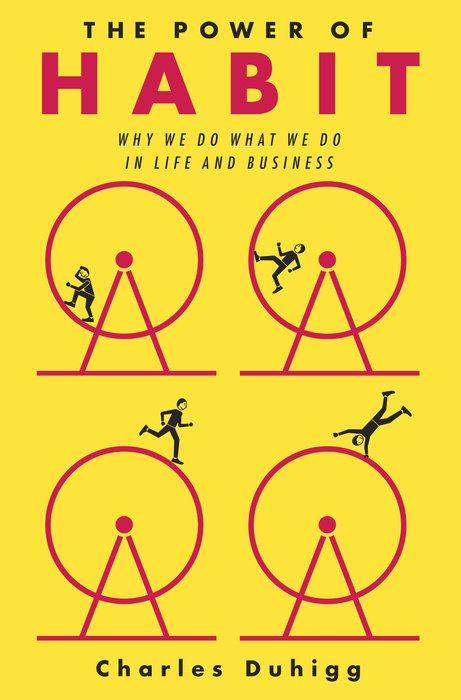To change people's habits, new behaviors must be made to feel familiar
- Procter & Gamble couldn't get Febreze to sell until they positioned it as part of the familiar cleaning routine, rather than a way to remove bad smells
- The U.S. government couldn't get people to eat organ meats during WWII until they described them as "variety meats" and used them in familiar dishes like meatloaf
- Target made new parents feel comfortable buying baby gear there by placing familiar items nearby and putting coupons next to regular merchandise
Section: 2, Chapter: 7
"Champions don't do extraordinary things. They do ordinary things, but they do them without thinking, too fast for the other team to react. They follow the habits they've learned."
Section: 1, Chapter: 3
Alcoholics Anonymous is so effective because it helps alcoholics use the same cues and get the same reward, but shifts the routine. Researchers found:
- The cues that triggered an alcoholic's drinking (certain locations, social situations, emotional states) are identified through the AA 12-steps
- The rewards of drinking are also explicitly spelled out - escaping anxiety, relaxing, socializing, etc.
- AA then provides new routines to respond to those cues and rewards - going to meetings, calling a sponsor, meditating, praying, etc.
By diagnosing the habit loop, and then providing an alternative routine to satisfy the craving when cued, AA helps transform people's deepest habits. As long as the cues, rewards and cravings remain the same, a whole new set of routines can be developed to change the overall habit pattern.
Section: 1, Chapter: 3
Look for the "keystone habit" that can set off a chain reaction of widespread change
- For the Montgomery bus boycotts, it was Parks' close ties to the community that made her arrest a trigger point
- Find a keystone habit that taps into social ties and peer pressure to make change seem inevitable
- At Target, the keystone habit they tapped into was the habit of shopping for familiar, regularly used items at the store. Adding baby products to this routine made it a place new parents naturally shopped.
Section: 2, Chapter: 7
Once a habit is formed, the brain stops fully participating in decision making. It stops working so hard, or diverts focus to other tasks. So unless you deliberately fight a habit—unless you find new routines—the pattern will unfold automatically.
Habits never really disappear. They're encoded into the structures of our brain, which is a huge advantage for us, because it would be awful if we had to relearn how to drive after every vacation. The problem is that your brain can't tell the difference between bad and good habits, so if you have a bad one, it's always lurking there, waiting for the right cues and rewards.
The brain's dependence on automatic routines can be dangerous. Habits are often as much a curse as a benefit. The key is to learn how to observe the cues and rewards that drive our behaviors, so we can change the routine that occurs in between.
Section: 1, Chapter: 1
Habits are formed through a 3-step process called the "habit loop":
- Cue: An environmental trigger that tells your brain to go into automatic mode and prompts a habit
- Routine: The actual behavior or action you take, which can be physical, mental or emotional
- Reward: The benefit or pleasure you gain from doing the behavior, which helps your brain determine if the loop is worth remembering for the future
Over time, this loop becomes more and more automatic as the cue and reward become neurologically intertwined. Eventually a powerful sense of anticipation and craving emerges, and the habit becomes ingrained.
Section: 1, Chapter: 1
Some habits matter more than others - they have the power to transform our lives by creating a cascade of other positive habits and outcomes. These are called "keystone habits."
Keystone habits say that success doesn't depend on getting every single thing right, but instead relies on identifying a few key priorities and fashioning them into powerful levers. Keystone habits shape how people work, eat, play, live, spend, and communicate. They start a process that, over time, transforms everything.
When people start habitually exercising, even as infrequently as once a week, they start changing other, unrelated patterns in their lives, often unknowingly. They start eating better, becoming more productive, smoking less, showing more patience, spending less time watching TV and more time on homework. They use their credit cards less frequently, feel less stressed, and become better planners and communicators. It's not completely clear why, but for many people, exercise is a keystone habit that triggers widespread change.
Section: 2, Chapter: 4
Books about Habits
Personal Development
Psychology
Habits
Human Behavior
Scarcity Brain Book Summary
Michael Easter
In a world of abundance, our ancient scarcity-wired brains keep us trapped in self-defeating loops of "more" - but by recognizing these patterns and deliberately choosing "enough," we can find deeper fulfillment.

Habits
Personal Development
Management
The Power of Habit Book Summary
Charles Duhigg
The Power of Habit illuminates the science behind habit formation and provides practical strategies for transforming habits in our personal lives, organizations, and society.


